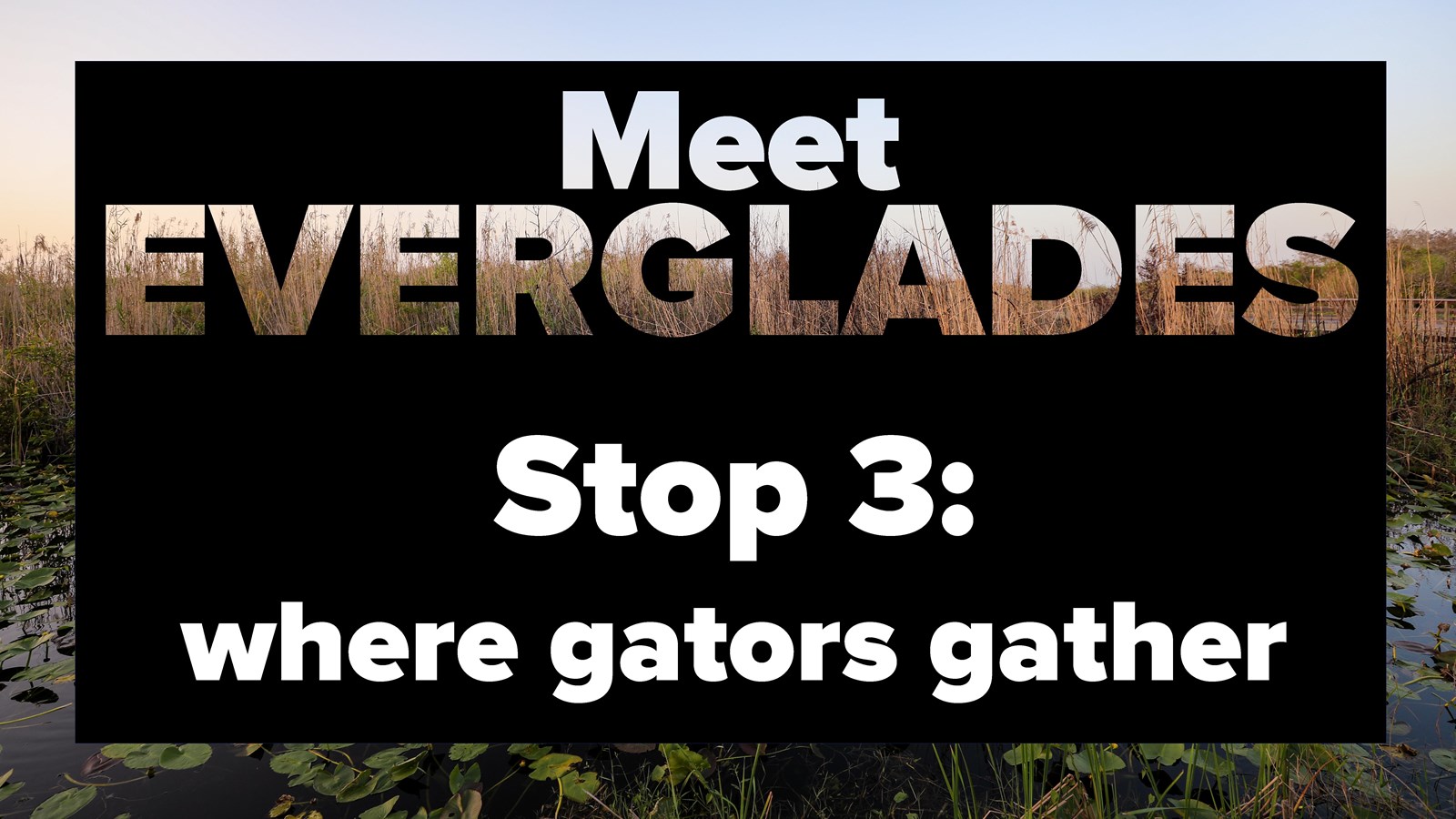Last updated: June 10, 2025
Place
Meet Everglades Stop 3 - Where Gators Gather

NPS Graphic
STOP 3: Where Gators Gathers
[Background ambiance: soft bird calls, breeze rustling through pond apple trees, occasional splash of water]
Welcome to Gator Point.
If you're visiting during the dry season, take a moment to look out over the water here. You’re standing above Taylor Slough, a slow-moving channel of deeper water that winds its way through this part of the Everglades.
In the summer, you might not see much here. The wildlife is quiet, scattered across the vast, flooded landscape. But come winter—the dry season—everything changes. All that water we talked about at the last stop recedes. The wide, shallow river collapses into deeper channels like this one, funneling life directly beneath your feet.
Suddenly, Gator Point becomes a front-row seat to one of nature’s greatest performances.
You may see anhingas nesting in the pond apple trees, drying their wings on low branches. Alligators drift silently through the water. Fish like largemouth bass dart in and out of the shade of the spatterdock – the large lily-pad-like leaves. And along the shores, herons and egrets stalk patiently through the shallows looking for insects and fish.
This explosion of activity follows the rhythm of the hydroperiod—the seasonal pulse of wet and dry. The animals here have evolved in stride with that rhythm, timing their movements and behaviors to take full advantage of the feast the dry season brings.
Let’s focus on one of the Everglades' greatest engineers: the American alligator.
[Low, distant bellow of an alligator]
Few animals are as perfectly suited to this environment. In the wet season, food is scarce. Fish and prey are too spread out, hidden across the flooded wetlands. But in the dry season, it’s feast or famine—and alligators know how to feast.
Some alligators migrate toward deeper sloughs like this one. Others take matters into their own claws... and dig.
They use their snouts and powerful bodies to excavate alligator holes—small ponds carved into the limestone or muck. Quite simply alligator holes are defined by three characteristics; a depression in the land – either natural or excavated, water to fill it, and the alligator who maintains it. These holes hold water long after the surrounding land dries up. And they don't just benefit the alligator. These self-made refuges attract fish, turtles, birds, and even support vegetation growth on their edges—creating entire habitats.
So, these holes do more than provide water. They support breeding. They offer shelter to countless aquatic creatures. They become prime foraging spots for birds and mammals. Over time, they can evolve into entire plant communities sparked by a single gator’s work.
[Soft sound of wings fluttering]
Now, look to the skies.
For thousands of years, wading birds like herons, egrets, and spoonbills have migrated from across the Americas to nest and raise their young here during the dry season. When food becomes concentrated, it's easier to catch—perfect for feeding hungry chicks before heading north or south again.
The sheer number of birds once present in the Everglades was legendary. In 1832, famed naturalist John James Audubon wrote:
"We observed great flocks of wading birds flying overhead toward their evening roosts. They appeared in such numbers to actually block out the light from the sun for some time."
Imagine that. A sky so filled with life; the sun disappears.
But that scene has changed.
You may have noticed, so far you have walked on a berm alongside a canal – the canal dredged to build the foundation for the path. This path is the remanent of what was once the Old Ingraham Highway—one of the first roads ever built in this part of the park. If you look out from Gator Point in the dry season, when the water is at its lowest levels, and you might spot more evidence of that road: an old ceramic culvert pipe, once used to direct water beneath it.
This road, like many early developments, was a part of a larger effort to "tame" the Everglades. Settlers and developers in the early 20th century saw this land as useless swamp—something to be drained, dredged, and converted into farms and cities.
But in trying to improve the land, we changed it. Roads, canals, and dams altered the flow of water, reshaping the very cycles that wildlife depend on.
The birds noticed. The alligators noticed. The Everglades itself noticed.
At our next stop, we’ll dive deeper into how the growth of South Florida—and our desire to reshape nature—has impacted this fragile, remarkable ecosystem.
